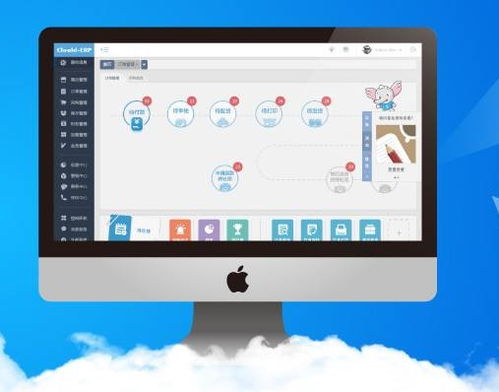
Understanding OMS: Order Management Simplified
Order Management Systems (OMS) are integral to the smooth operation of any business that deals with sales and distribution. Whether you’re a small e-commerce startup or a large multinational corporation, an efficient OMS can make a significant difference in your customer satisfaction and operational efficiency. In this detailed guide, we will explore the various aspects of OMS, its benefits, and how it can be tailored to fit your business needs.
What is an OMS?

An Order Management System is a software solution designed to streamline the order processing workflow. It encompasses everything from order intake to fulfillment, tracking, and customer service. An effective OMS can handle orders from multiple channels, including online, in-store, and over the phone, ensuring consistency and accuracy across all platforms.
Key Features of an OMS

Here are some of the essential features that a comprehensive OMS should offer:
-
Order Processing: The system should be able to handle order intake, validation, and routing efficiently.
-
Inventory Management: Real-time inventory tracking to ensure accurate stock levels and prevent overselling.
-
Order Fulfillment: Automation of fulfillment processes, including picking, packing, and shipping.
-
Order Tracking: Real-time tracking of orders from placement to delivery.
-
Customer Service: Integration with customer service tools to provide timely and accurate order updates.
-
Reporting and Analytics: Detailed reports and analytics to help businesses make informed decisions.
Benefits of Implementing an OMS

Implementing an OMS can bring numerous benefits to your business, including:
-
Improved Efficiency: Automation of manual processes reduces the time and effort required to manage orders.
-
Increased Accuracy: Minimizes errors in order processing and fulfillment.
-
Better Customer Service: Provides real-time order updates and improved customer communication.
-
Cost Reduction: Reduces labor costs and operational expenses.
-
Scalability: Allows businesses to grow and adapt to changing market demands.
Choosing the Right OMS for Your Business
Selecting the right OMS for your business requires careful consideration of several factors:
-
Business Size and Complexity: Choose an OMS that can scale with your business and accommodate your specific needs.
-
Integration: Ensure the OMS can integrate with your existing systems, such as CRM, ERP, and accounting software.
-
Customization: Look for an OMS that offers customization options to tailor the system to your business processes.
-
Support and Training: Consider the level of support and training provided by the vendor.
-
Cost: Evaluate the total cost of ownership, including licensing, implementation, and maintenance.
Case Study: How XYZ Corporation Improved Their Order Management
XYZ Corporation, a medium-sized retail company, faced several challenges in their order management process. They experienced frequent errors in order processing, delays in fulfillment, and poor customer service. After implementing a new OMS, they noticed significant improvements:
| Challenge | Before OMS | After OMS |
|---|---|---|
| Order Processing Errors | High | Low |
| Order Fulfillment Delays | High | Low |
| Poor Customer Service | High | Low |
| Operational Costs | High | Low |
By implementing an OMS, XYZ Corporation was able to streamline their order management process, reduce errors, and improve customer satisfaction.
Conclusion



